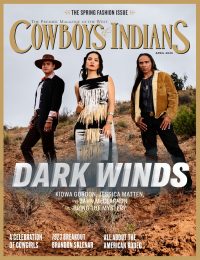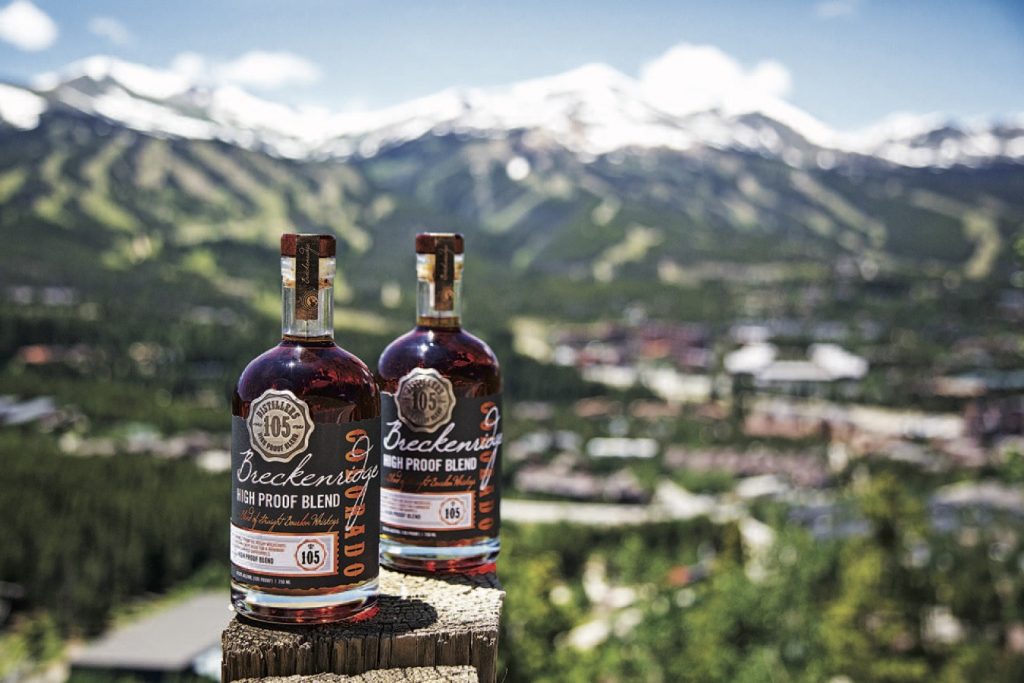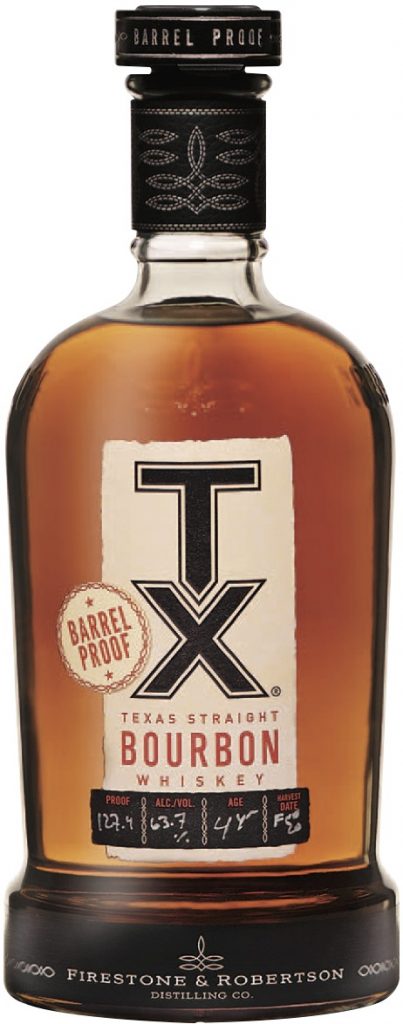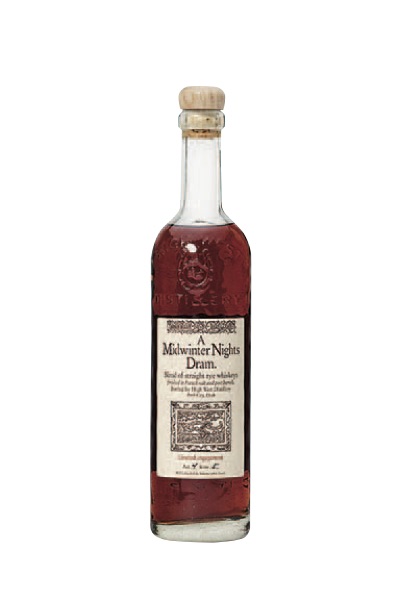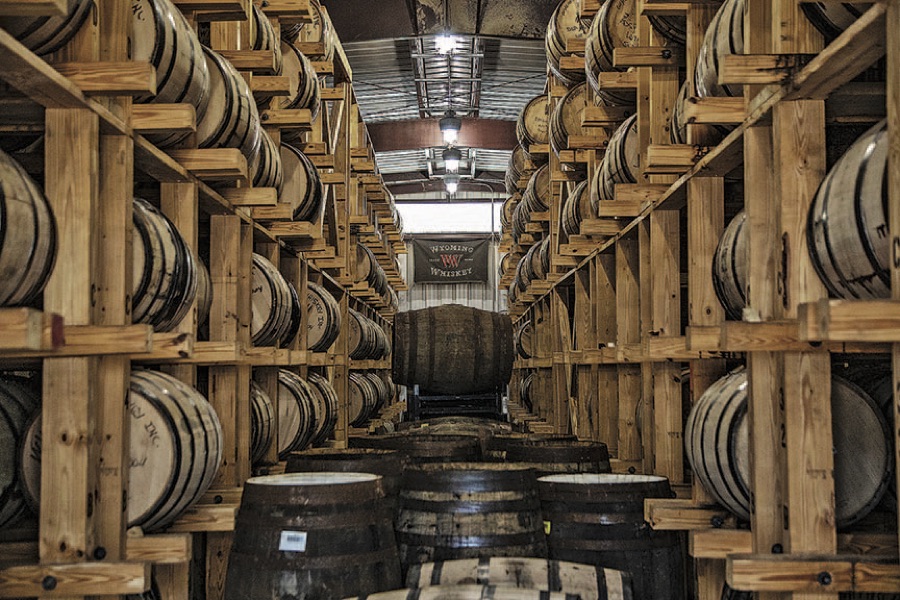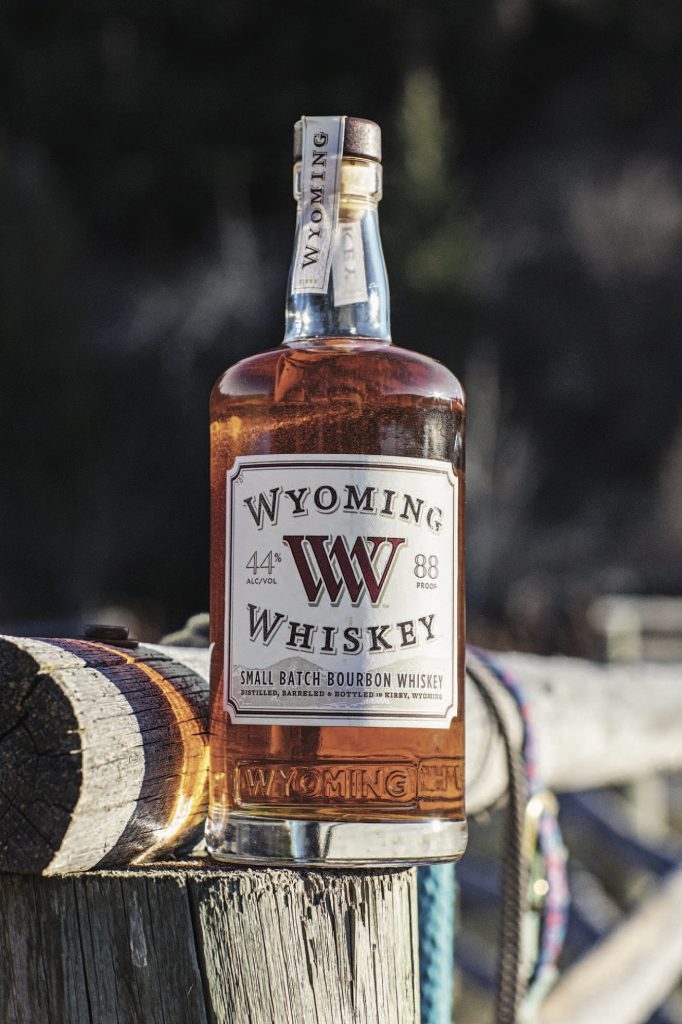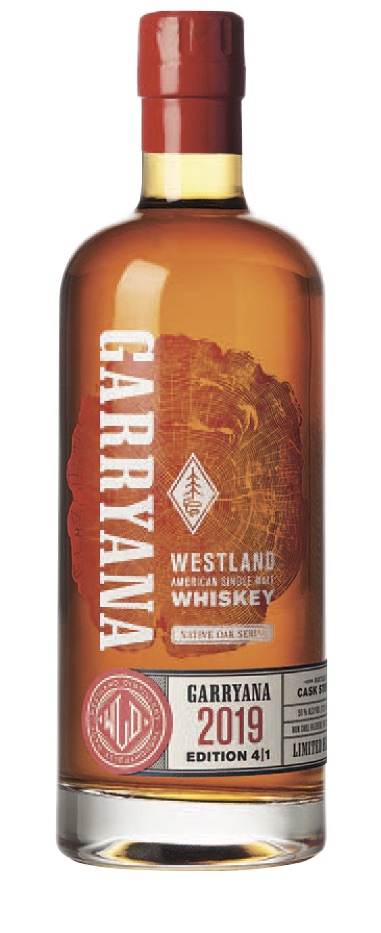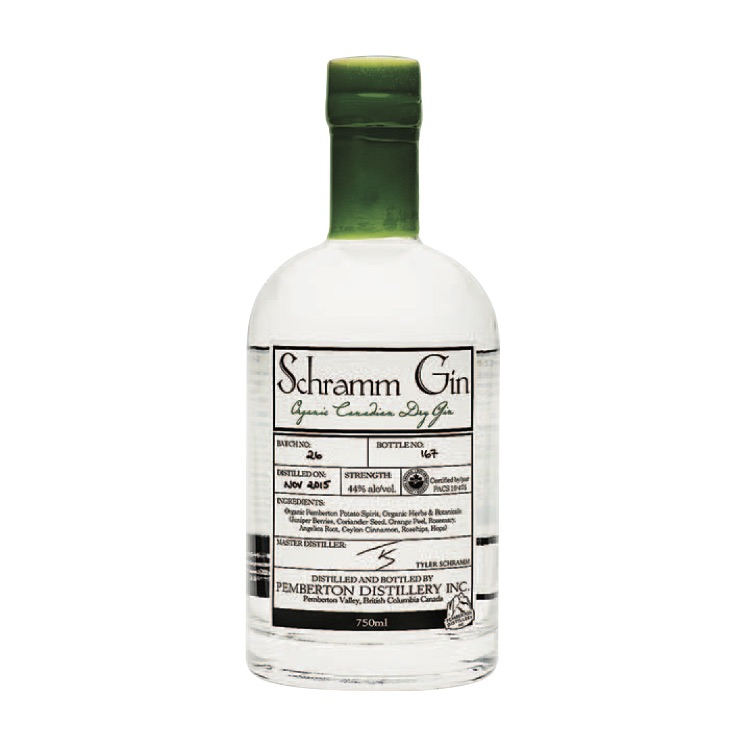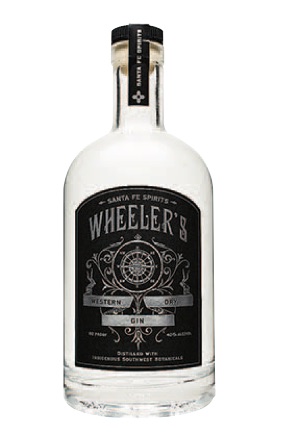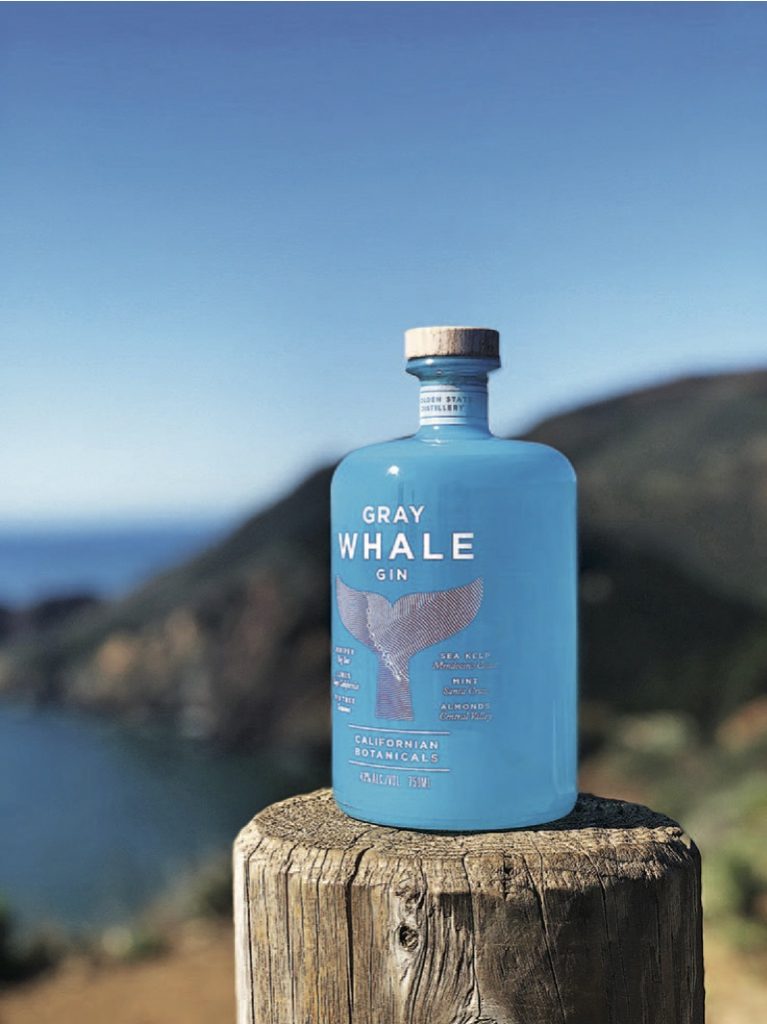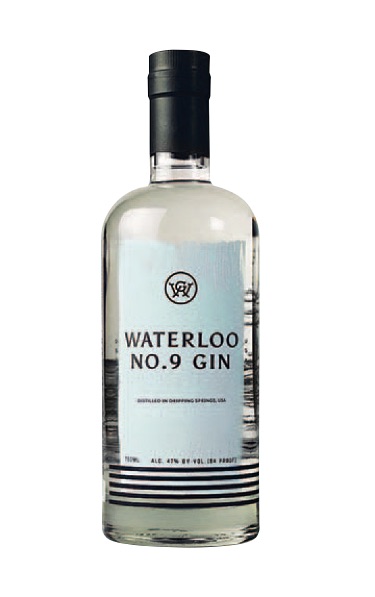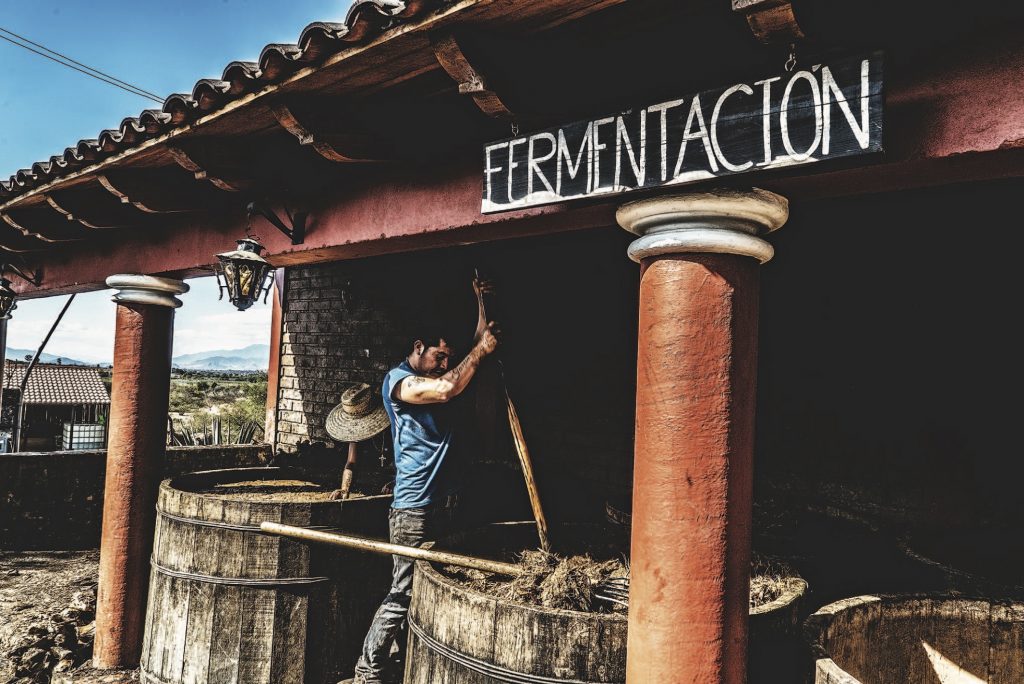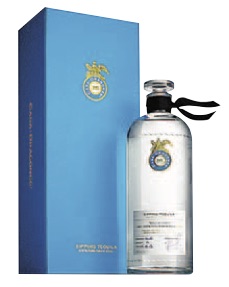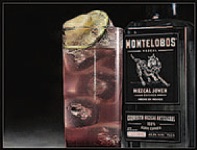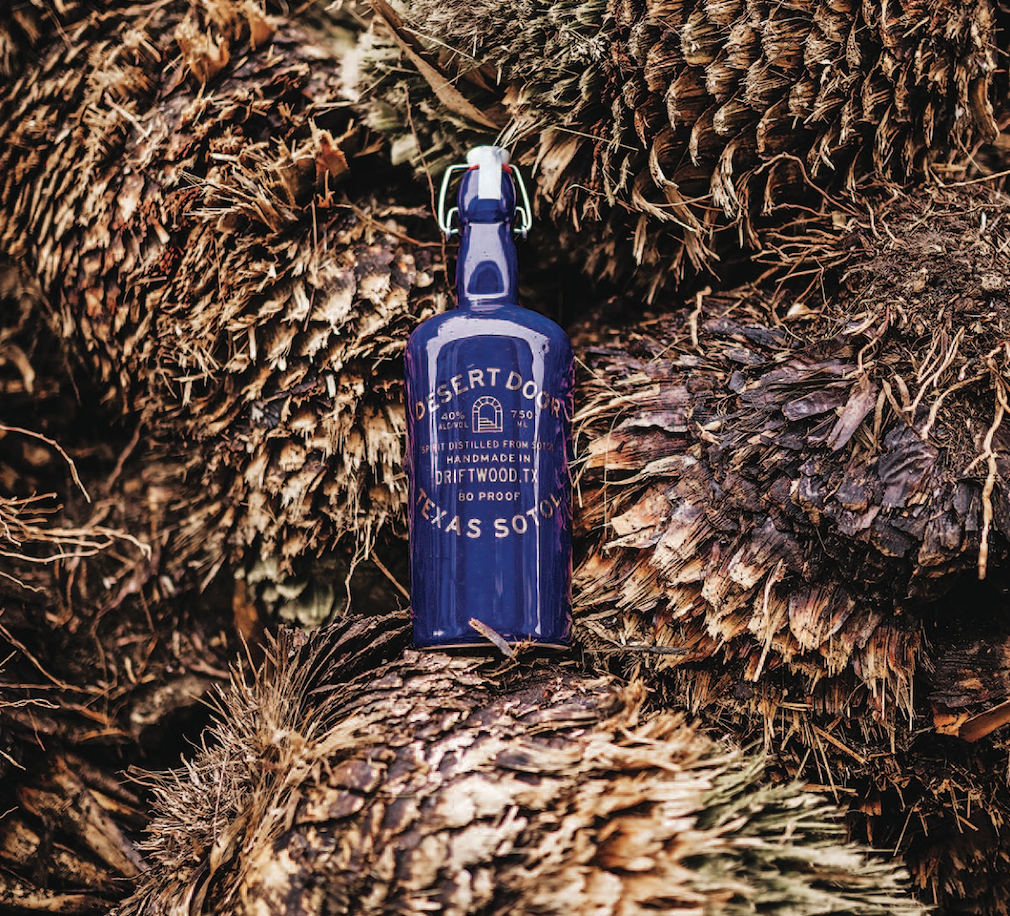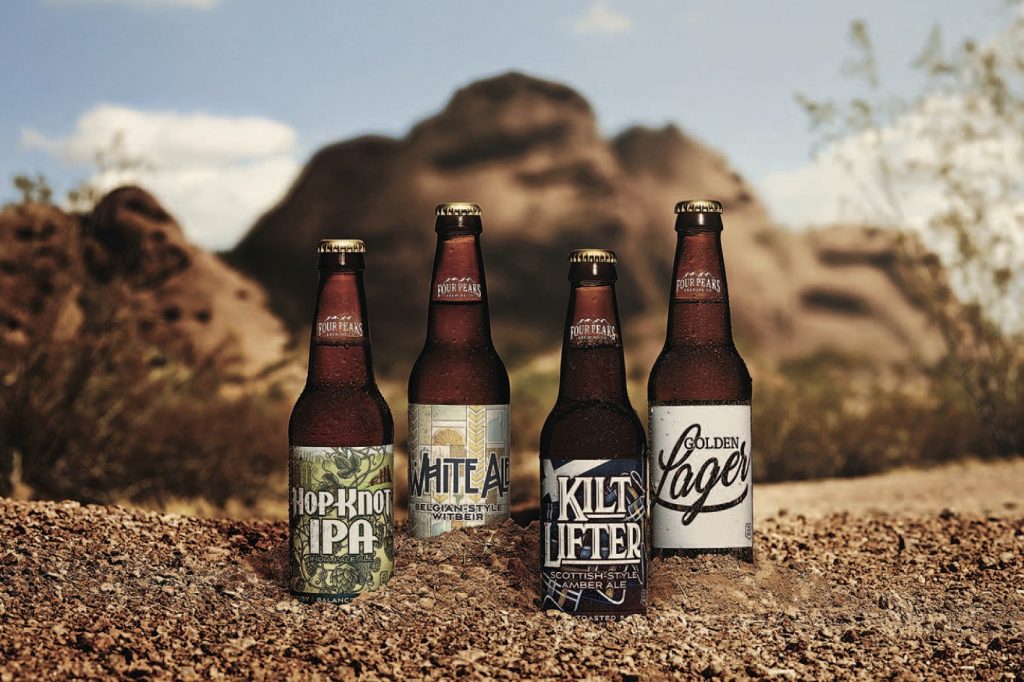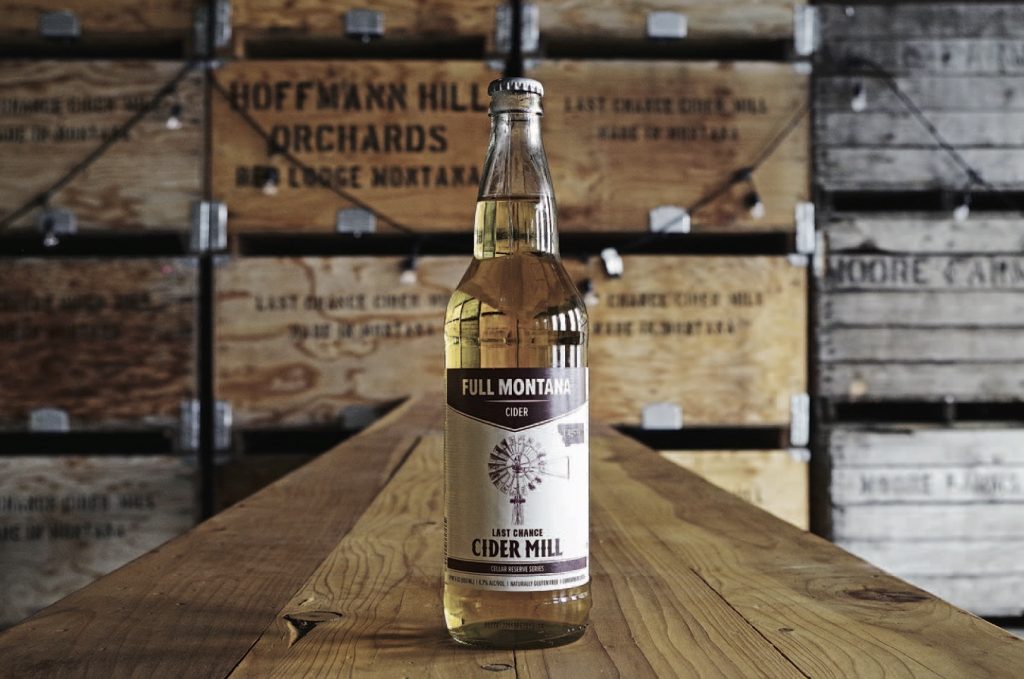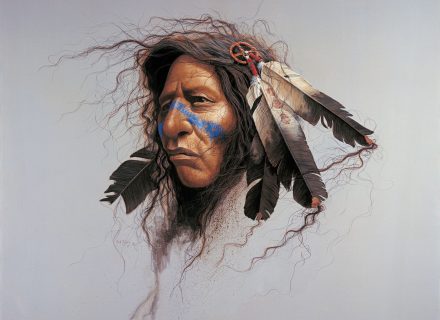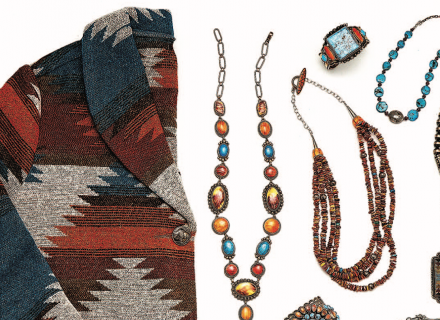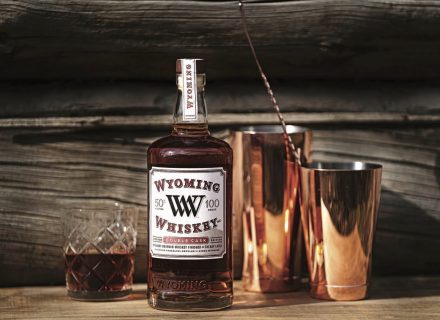We’ve come a long way from the Old West days of room-temperature nickel beer and ammonia-cut “tarantula juice.” Lift a flute, snifter, or mug and savor these exceptional bottles and brands.
Believe it or not, the American West wasn’t always a gleaming mahogany landscape stocked with superb Wyoming sherry cask-aged whiskeys, wild California sea kelp-infused gins, and tear-jerking Colorado dry-hopped ales offering the perfect balance of citrus, floral, and caramel toffee notes.
Back in the day, pushing through your average set of 1860s swinging doors at any pop-up bar between El Paso, Texas, and Bluff City, Alaska, your booze choices were usually even cruddier than that joke about the three-legged dog who angrily hobbles into a crowded saloon with pistols drawn (“All right, which one of you shot my paw?”). The beer was warm. The frail liquor was often enough cut with ammonia, cayenne, or gunpowder for an added penny-pinching kick. Not a good night, and an even rougher next morning, one can safely assume.
Fortunately, that was then. Today’s West is home to some of the country’s most palatable, innovative, masterfully distilled and brewed goods. Shoot, we’d lift a conciliatory glass to Wild Bill Hickok, Calamity Jane, and the rest of the Old West’s colorful characters for missing out on it — if we weren’t too busy savoring how far we’ve come.
Speaking of toasts, how in the world do we single out all of our favorite stuff when there are too many exceptional bottles and brands proudly raised out West to name? Happily, we can’t, but here’s a spirited shot in the right direction. Cheers.
Five Wild WHISKEYS of the West
As any 19th-century “tarantula juice”-drinking Wild West barfly could confirm, quality American whiskey production wasn’t exactly born in these parts. Like people, it was naturally drawn here over time.
During the 1790s, an unpopular whiskey tax would lead dissenting Pennsylvania distillers to head for the nascent bourbonlands of Kentucky and Tennessee where whiskey history was truly reborn. But the barrels didn’t stop there.
Fast-forward a couple centuries and some of today’s finest bourbon, rye, and American single-malt outliers have, in small but sure batches, cropped up far beyond the Louisville area. Here are five bottles of solid liquid proof.
BRECKENRIDGE, COLORADO
Breckenridge — High Proof Blend of Straight Bourbon Whiskey
At 9,600 feet above sea level, Breckenridge believably touts itself as the “World’s Highest Distillery.” All lofty geography and marketing aside, the 12-year-old craft whiskey producer has been busy making bourbons that genuinely live up to all the altitude. Shifting from out-of-state sourced product to their own distillate in recent years, the famous ski town distillery’s sweet-but-peppery High Proof Blend is one of its top mid-priced bottles, offering rich tones of oak, vanilla, and rye spice with a 105-proof kick. $60
FORT WORTH, TEXAS
Firestone & Robertson — TX Straight Bourbon Whiskey
The “largest whiskey distillery west of the Mississippi,” according to the distinguished team behind this Whiskey Ranch, is also one of the more picturesque — housed on a historic 112-acre golf course overlooking downtown Fort Worth. More important, what’s in the mash bill? In a big nutshell — Texas. Texas yellow dent corn. Texas soft red winter wheat. And a proprietary strain of Lone Star yeast derived from — Pappy Van Winkle would never guess — local pecans. The result is exactly what you’d want and expect from a pioneer of North Texas bourbon culture: first-rate Fort Worth firewater. $50
PARK CITY, UTAH
High West — A Midwinter Night’s Dram
Utah’s first post-Prohibition legal distillery opened its saloon doors just 14 years ago in a converted livery stable at the base of a popular ski hill. Now a globally recognized premium rye brand with a recent Whisky Advocate “Distiller of the Year” nod and an expansive whiskey-making compound in neighboring Wanship, High West thankfully hasn’t lost its charming, unbridled Park City roots. The downtown saloon is still there on Park Avenue, along with the only ski-in gastro distillery we’re aware of. High West makes some of the most playful limited-release whiskeys you’d enjoy sipping anywhere — but preferably up here. Our fun, Shakespeare-worthy favorite, A Midwinter Night’s Dram, is what happens when rye is sequentially finished in port barrels (for fruitiness) and French oak (for spice). The result, as the creators describe it, is a layered whiskey that “tastes like a proper Christmas plum pudding with lovely mulling spices, dried fruits, and crème anglaise ... that will help you through the coldest night — and pairs beautifully with fig cookies!” From $99
KIRBY, WYOMING
Wyoming Whiskey — Small Batch Bourbon Whiskey
What are the odds that a rising star whiskey maker is hiding way out in central Wyoming’s Big Horn Basin — specifically, at an old family ranch on the edge of a place called Kirby (population 87)? As it turns out, pretty darned good. Wyoming Whiskey, the state’s first legal distillery, was cofounded in 2006 by a trio of Jackson Hole-based attorneys (and courageous bourbon fans) heeding an even higher calling: to create a bona fide, self-defining, start-to-finish homegrown “Whiskey of the West” in just the right place. That place is greater Kirby, home to non-GMO corn, wheat, barley, and rye ingredients sourced from neighboring farmlands less than 100 miles up the road. The small-batch bourbon’s sine qua non is pristine, high-pH water from a local limestone aquifer, lending it a comparable texture and minerality usually found only in world-class Kentucky whiskeys. Numerous national spirit awards later plus a recent partnership with Scotland’s Edrington (of Macallan and Highland Park fame), Wyoming Whiskey still proudly remains what it originally set out to be. Strictly Wyoming. $45
SEATTLE, WASHINGTON
Westland — Garryana American Single Malt Whiskey
A mere 4,400 miles from the parish of Glenlivet and right next door to one of the world’s finest barley-growing regions in its own right, Seattle’s seminal single-malt distillery makes some of the world’s finest craft whiskeys that can’t legally or rightfully be called Scotch. “To produce our single malts,” Westland says, “we endeavor to create something that both honors the traditions of distilling that we admire and adds something worthwhile at the same time. Something new and distinctly American.” A recent best American single-malt winner at the World Whiskies Awards, Garryana is Westland’s latest distinctive phenomenon. Aged in native Garry oak and sherry casks, it has been lauded by Seattle Times spirit gurus as having a sweeping palate with “notes of toffee, coffee grounds and blackberries [and] hints of banana peel and cloves.” $150
Five Gutsy GINS of the West
You may have heard (not from Uncle Tito, but other sources) that gin — America’s original base spirit for martinis and many a classic cocktail before vodka began stealing that show — is enjoying its long-awaited second heyday.
That’s especially true out West, where some of the country’s most trailblazing, herbally creative craft distilleries have jump-started the venerable spirit’s latest comeback and rethinking. Here are five bottles for your next intrepid gin journey way off the Beefeater highway.
PEMBERTON, BRITISH COLUMBIA, CANADA
Schramm Organic Gin
You’ll have to go to Canada to try this uniquely potato spirit-based, certified organic, 88-proof standout with a kick of local Cascade hops and a hint of rosemary for the restless gin palate. Better yet, heading straight to Pemberton Distillery itself — just 100 miles up the road from Vancouver near Whistler Ski Resort — puts you in prime British Columbia mountain country. Appealing to an increasingly diverse gin-sipping audience, Pemberton’s flagship product has been ranked in North America among the Top 10 New American Gins and has also received a Bronze Medal at the London International Spirits Competition — confirming that sometimes you really can please just about everyone. Especially when you make a fine vodka and absinthe with local spuds too. $40
SANTA FE, NEW MEXICO
Wheeler’s Western Dry Gin
Situated on an heirloom apple orchard in a small farming community just outside of its namesake town, Santa Fe Spirits has in just 10 years become one of the top artisan distilleries of the Southwest for its fine malt whiskey, revival-worthy apple brandy, and one of the more adventurous gins you’re likely to encounter anywhere. Purpose-fueled local botanicals like osha root, magenta cactus flowers, and homegrown sage give this classic dry gin, in the words of its distillers, “bold complexity” and “sincere terroir.” George Wheeler, the great 19th-century Southwestern explorer and cartographer after whom the gin is named, would no doubt approve. $38
SEBASTOPOL, CALIFORNIA
Bursting with novel botanicals, the breakout spirit from Golden State Distillery has the company’s namesake coastline all over it. Juniper from Big Sur, kelp from Mendocino, and almonds from the Capay Canyon Ranch. Mint from Santa Cruz, fir needles from the Sonoma Valley, and limes from Baja, California. “It’s a simple notion that we cooked up on a camping trip to Big Sur,” note the company cofounders — a Food Network host and a filmmaker — who were further inspired by a passing California gray whale and its calf. “We celebrate their 12,000-mile journey with a beautiful gin made of botanicals foraged along the migratory path of that majestic creature.” Seven-times distilled, gluten-free, capped with a biodegradable cork atop our vote for the coolest-looking gin bottle on either side of the pond, and co-branded by an ocean conservation initiative — gin has never ridden a wave quite like this. $40
DRIPPING SPRINGS, TEXAS
Treaty Oak Distilling’s concise three-bottle gin lineup under the “Waterloo” brand (the original name for the city of Austin) treats its vast Texas Hill Country headquarters like a new wide-open frontier for an old spirit we thought we had pegged. Yes, you’ll find those juniper, coriander, and anise staples in their flagship No. 9 Gin. Then the real fun begins with Western-style infusions of carefully sourced local pecans, lavender, and grapefruit zest all gathered even closer to home. Rounding out Treaty Oak’s gin lineup is Waterloo Antique (aged in medium-char white-oak barrels) and Old Yaupon — a botanically rich Old Tom-style homage laced with Yaupon holly, Makrut lime, orris root, and wildflower honey. The overarching theme, according to the distillers: gins that “strike the perfect balance between heritage and innovation” and are “redolent of a thoughtful way to consider a place.” $24
PORTLAND, OREGON
What makes a classic American gin? A century after Prohibition crushed the original domestic gin industry, it may be tough to recall. Fortunately, that didn’t stop Aviation from taking on the case back in 2006 and methodically cracking it in its own dry, fresh way. Step 1: Take the juniper down a few notches. Step 2: Lead instead with a forward-thinking citrus-floral infusion that includes French lavender, sarsaparilla, and two types of orange peel. Step 3: Smartly name this novel distillate after a classic early-20th-century cocktail (the Aviation) and go with a sleek retro bottle. The result is a 97-point rating from Wine Enthusiast — the publication’s highest ever bestowed upon a gin — and a starring role in the latest American gin craze, with a spirited nod to its glorious, hazy past. Have a sip and enjoy the brand’s commercials created by actor Ryan Reynolds, who bought a stake in 2018. $25
Cuatro TEQUILAS y MEZCALES Fantásticos del Oeste— and One Studly SOTOL From Texas
It’s a good thing the West carries on south of the border, because there’s no excluding our favorite blue agave-derived spirit, tequila, and its more broadly defined hermano, mezcal (made from numerous types of agave) in this happy mix. Both are strictly produced in designated regions of Mexico — primarily the west-central state of Jalisco (tequila’s prime production hub) and deep-southwest Oaxaca (mezcal-making central).
North of the border, America has swiftly become the world’s biggest market for tequila, according to the International Wines and Spirits Record — with hip, smoky mezcal seeing an astounding 32 percent national consumption bump in recent years. Translation: Cuervo and Patrón don’t even scratch the surface. Here’s an extra pair of tequilas and mezcals worth knowing, and one stateside sotol for good measure. ¡Salud!
TLACOLULA de Matamoros, OAXACA, MEXICO
A sippable, approachable mezcal, this uniquely prepared reposado is aged for four months in bourbon barrels, lending it a woodiness and velvety mouthfeel with hints of bitter orange, toffee, and clove that whiskey fans should particularly appreciate. Produced at the century-old Destileria Tlacolula, one of Oaxaca’s most revered traditional mezcal distilleries, Ilegal Mezcal naturally raises the question — what’s behind the name? As the story goes, the brand’s American expat founder John Rexer started his business as a pet project after illegally sneaking Oaxacan mezcal over the border to keep his Guatemala bar, Café No Sé, well-supplied for a rapidly growing demand. Nowadays it’s all done by the book. $60.99
TEQUILA, JALISCO, MEXICO
Cofounded just over a decade ago by “First Lady of Tequila” Bertha Gonzalez Nieves, Mexico’s first female Maestra Tequilera (master tequila distiller), Casa Dragones has forged its own savory corner of the higher-end tequila market with awards and accolades that jibe with its focus on craft, purity, and controlled small-batch, hand-signed and -numbered bottles. For a relative bargain in this bracket, start with the Blanco ($75), a crisp, subtly sweet but peppery experience that stands well on its own. When you’re ready, advance to the heralded joven — a supremely smooth blend of silver and extra-aged tequila, which Travel & Leisure said is quite likely “the best sipping tequila made” and Oprah ordained “one of her favorite things.” For private tastings, dedicated tequila tourists can head to the historic town of San Miguel de Allende to visit the producer’s tony tasting headquarters, housed in the converted stables of a 17th-century cavalry battalion. $285
JÉSUS MARÍA, JALISCO, MEXICO
Dwarfing its Casamigos, Herradura, and Don Julio cousins like a Guadalajara steeple, Clase Azul’s handmade, individually painted 15-inch-tall ceramic decanter, capped with an actual bell, is one holy-looking bit of top-shelf architecture. All righteous packaging aside, it’s what’s happening inside that counts. The premium brand’s famously smooth tequila foursome ranges from an unaged Plata and a 2-year-old Añejo to an “extra-añejo” aged for five years in sherry wood with limited releases in platinum-, silver-, and gold-embroidered receptacles starting at around $1,600. For our time and money, we’ll opt for the sufficiently rested Reposado — a zero-burn, oak barrel-aged perfect sipper that’s been described by tequila evaluators as having “complex aromas of earthy agave, spice, caramel ... and [wait for it] cream soda.” $115
SANTIAGO Matatlán, OAXACA, MEXICO
Jumping from tequila to its smoky kin-spirit mezcal can be painful if you’re not careful. Start too hard and it’s like staring down a campfire in the wind. Here’s that young, light, sweet, subtle-enough mezcal packing just the right amount of earthy oomph to safely ease the palate into your next big fiery agave spirit experience without engulfing it. Produced from organic Oaxacan espadín agave roasted for up to a week in a traditional stone pit, this artisan mezcal strives to avoid what company founder Dr. Iván Saladaña (who has authored a book on the subject, The Anatomy of Mezcal) calls “inopportune proportions.” Concentrating equally on mezcal’s sweeter, citrusy notes alongside the requisite smoke, the result is an easy one to enjoy neat, on the rocks, or for perking up your next margarita before venturing deeper along that sooty mezcal trail at your own happy peril. $38
DRIFTWOOD, TEXAS
Desert Door Texas Sotol Original
Sotol. It might not have the same ring as its spotlight-hogging, once-removed cousin tequila. But that just makes this freewheeling northern Mexico-derived spirit — produced from a flowering desert plant also abundant across the American Southwest — all the more intriguing (and legal) to produce in the United States. That’s good news for audacious domestic distillers and swillers open to discovering a traditional spirit “reminiscent of a desert gin crossed with a smooth sipping tequila,” note the founders of Desert Door — a trio of Texas-based military veterans and University of Texas biz school grads determined to put sotol on the map, one deep-blue bottle at a time. Made from wild-harvested West Texas sotol in accordance with the traditional spirit’s ancient Chihuahuan Desert native producers, the goods are cooked in steam and fermented with organic yeast before modernity (a custom-built copper still) plays its hand. The final product is described by its makers as finishing “with minerality and a welcome eucalyptus quality that will make you wonder why you haven’t met before and have you dreaming of your next encounter.” $40
Four Bold BEERS of the West — and One Scrumptious CIDER
Back in American beer’s medieval period (the late 1970s), fewer than 90 breweries owned by just 42 companies were producing mainly run-of-the-mill suds to an oblivious but parched nation.
Only the most clairvoyant beer geeks would have predicted today’s craft hyper-renaissance, which has resulted in more than 7,000 breweries from coast to coast — 150 in Denver alone — and about 98 percent of them small, independent craft brewers obsessed with turning a once dull national beer industry into a hopped-up landscape of world-renowned ales of all shades and overachieving lagers now treated with the deference of fine wines.
What makes the American West such a force in today’s beer brigade? There’s the terroir itself — home to some of the world’s top barley and hops fields. There are all those beer festivals — check out Portland’s roster alone. And there’s the sheer volume. Just three Western states — California, Colorado, and Washington — are home to nearly a third of America’s craft breweries.
Trying to single out four great Western brews and a single cider from all the legendary ones that this half of the country consistently puts out is sheer agony, but we did it. Here we raise a frosty pint to five standouts in five great brewing states — while gratefully tipping our hat to all of those other game-changers that helped get us here. Hey, Sierra Nevada Pale Ale, Anchor Steam, Odell IPA, Russian River Pliny the Elder, Weldwerks Coffee Maple Achromatic Imperial Double Stout, etc., etc. — this Bud’s for you.
THE IDAHO IPA
Grand Teton Brewing Teton Range IPA
Once upon a time (in 1988), Grand Teton Brewing garnered instant Western beer cred by becoming Wyoming’s first modern craft brewery. Hopping across Teton Pass a decade later, the award-winning ale maker is now Idaho’s oldest brewery and as rock-solid as any beer company branding itself after its neighboring mountain range needs to be. Homegrown grains and hops as well as naturally filtered Teton glacial runoff (surfacing from a spring half a mile from the brewery) are a few of the secrets behind Grand Teton’s crisp and fruity flagship IPA with just a hint of pine and merciful restraint on the palate-clobbering bitterness. Hefty enough to be ranked among the top 50 IPAs in the nation by Draft Magazine, it’s also tender enough for the same graders to liken the beer’s nose to “a basket of fruits and flowers ... and a hint of Pixy Stix.” For hardcore hopheads, Grand Teton’s seasonal IPA, Hoplexity, features revolving hop combinations for each release, and its double IPA, Lost Continent, uses a whopping six different strands.
THE OREGON PORTER
When you’re the flagship beer of an A-list craft institution like Deschutes Brewery sporting a lineup of all-star ales (Mirror Pond, Bachelor Bitter, Fresh Squeezed IPA, Obsidian Stout, The Abyss, Red Chair NWPA — the list goes on) that’s been consistently blowing beer buff minds for more than three decades, that’s saying something. Back in the late ’80s when this Bend, Oregon, institution was a little brewpub with a crazy dream in a small town by a wild river (the Deschutes, hence the name), there weren’t many porters floating around this side of the Atlantic, and even fewer good ones. No longer the dark horse — but still plenty dark, rich, creamy, and layered with definitive tones of coffee and chocolate — Black Butte is the second-highest rated of more than 7,000 American porters now swamping the Beer Advocate database. That’s saying something too.
THE WASHINGTON LAGER
Chuckanut Brewery Pilsner Lager
Attention, lager drinkers, there’s far more to the world’s most popular beer species than what often meets the koozie. Take the ones meticulously crafted at Chuckanut Brewery. During its dozen years, the small Bellingham-based gem has wowed savvy clientele and distinguished beer judges with some of the most game-raising lagers between coastal Washington and Bavaria. A gold medalist in the 2018 Beer World Cup, Chuckanut’s signature European-style cold-fermented pilsner is described by the brewer as “floral,” “snappy,” and “mouthwatering.” And it pairs perfectly with a Reuben sandwich or bowl of steamer clams soaked in savory beer broth. As luck would have it, Chuckanut serves those things as well.
THE ARIZONA ALE
Four Peaks Brewing Co. Kilt Lifter
Furnished with over 100 craft breweries, Arizona knows a thing or two about beer — and not just poolside pilsners in July. The flagship medal-winner from Tempe’s biggest craft brew distributor, Four Peaks Brewing Co., is this full-bodied, Scottish-style ale brimming with flavors of caramel and roasted barley. Housed in a historic Mission Revival-style brick building that did time as an ice factory, creamery, and recording studio, Four Peaks’ Eighth Street headquarters in Tempe is open for brew tours (and lunch) and no airs about its recent world-conquest partnership with Anheuser-Busch. For calorie counters, there’s Gilt Lifter: half the cals and carbs with all that Gaelic-flavored goodness.
THE MONTANA CIDER
Last Chance Cider Mill Pearfection
Founded in 2016, Billings-based Last Chance Cider Mill has already gained a reputation for producing some of the top small-batch ciders in the West. Employing Montana and Oregon apples (OK, and some Michigan ones), it’s the first cider maker in the state to grind and press its own apples instead of relying on commercial juices or concentrates. The tasty results include a recent gold medal at the North American Beer Awards for its Pearfection cider — moderately sweetened with Oregon pear juice. For some extra tart, try the Flathead Cherry (which won the silver) along with Last Chance’s semi-sweet signature cider, Orchard Run. About 20 tons of apples are pressed weekly at the mill, and we know you’re wondering where all that leftover apple pomace goes. To a local farmer for his cattle. Last Chance is that kind of a place.
For more from our Taste of the West feature …
Photography: Images courtesy Shutterstock, Distilleries, Breweries
From our October 2020 issue.



